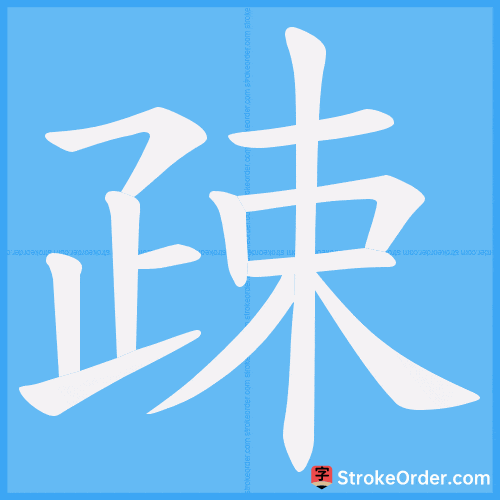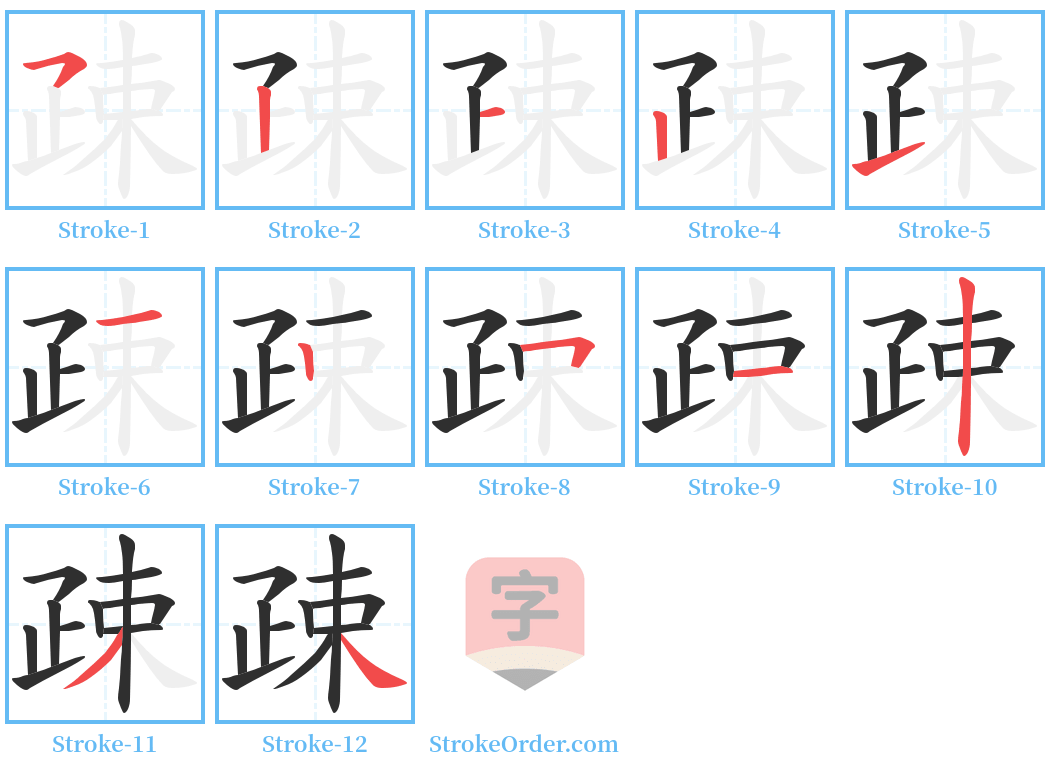疎 Stroke Order
Animated Stroke Order of 疎

Stroke Order Diagrams for 疎

Information of 疎
Pinyin
shū
Radical
疋
Strokes
12 strokes
Usage
★★
Definition
疎 (shū)
1. Same as "疏".
2. (Verb) A compound ideogram. "疋" means to pass through. The original meaning: to guide, to open up.
- Same as the original meaning, "疏" means to pass through as well. — From "Shuōwén Jiězì".
- "疋" refers to breaking the wrapping and moving. When pregnant, it is blocked; when born, it is open. Therefore, it shifted to represent the relationship of opening and spatial division, commonly written as "疎". After the Han Dynasty's expansion, its half was hidden as "束氏".
- "疏" refers to rivers and valleys, guiding their qi (energy). — From "Guóyǔ · Zhōuyǔ". Note: “pass through”.
- Yǔ dredged the nine rivers. — From "Mèngzǐ · Téng Wéngōng Shàng".
- "疏" denotes river channels, ditches, and ponds. — From "Liú Zōngyuàn’s Xué Shuō".
- The advantages and disadvantages of water have been evident since ancient times. Yǔ dredged the ditches and cleared mountains channeling rivers. — From "Shǐjì · Hèqú Shūzàn".
Examples:
- 疏决 (shū jué) - dredging; opening up.
- 疏漏 (shū lòu) - water leakage.
- 疏源 (shū yuán) - clear the water source.
- 疏瀹 (shū yuè) - dredging, guiding.
- 疏辟 (shū pì) - open and dredge.
- 疏涤 (shū tí) - dredge and clean; clear and eliminate.
- 疏治 (shū zhì) - guide and govern.
- 疏凿 (shū zuò) - break through obstructions for smooth flow.